You’ve created your online course.
You’ve poured your heart into every lesson, recorded dozens of videos, and launched with high hopes.
But here’s the brutal reality: Most course creators are earning peanuts.
The difference between struggling course creators and those making millions isn’t talent or luck.
It’s systems thinking.
The creators crushing it aren’t just creating better courses. They’re building interconnected systems with feedback loops, compounding leverage, and self-reinforcing cycles that scale exponentially without requiring their constant presence.
Here are 10 strategies that successful course creators use to build these systems.
Foundation building
Start small and iterate rapidly
Here’s what nobody tells you about course creation: those elaborate 50-module courses you see online?
Most of them started as simple PDFs or 90-minute workshops.

The fastest path to course success is starting with a minimum viable course that creates an immediate feedback loop.
Here’s how it works:
- Start with a specific problem: Create content that solves just one specific problem and then expand based on what your students actually need from their real-world feedback.
- Learn from students: Every time a student interacts with your content, they’re teaching you something valuable about your market.
- Find content gaps and create content: When students ask questions, they’re showing you exactly where your content needs improvement.
- Replicate success: Success stories reveal what’s working. This knowledge builds up over time, making each new version of your course way better than the last.
The real magic happens when you actually document these feedback patterns.
👉 Create a simple system to track common student questions, breakthrough moments, and stumbling blocks. This becomes your roadmap for content expansion and course improvement.
Take Jenna Kutcher’s approach.

She didn’t start with a huge social media masterclass. Instead, she created a simple $27 “starter course” focused only on Instagram story strategies – just 90 minutes of content plus a workbook.
But here’s the systems thinking part most people miss: she built feedback collection directly into the course structure.
She sent weekly check-in emails asking specific questions about implementation challenges. Her private Facebook group became a goldmine of organic discussions about what worked and what didn’t.
Using this systematic feedback, she identified gaps and built her next course based on actual student needs.
That small initial course eventually grew into multiple six-figure programs.
Master the value equation
Most course creators think scaling means raising prices or cramming more modules into their course. That’s completely backwards.
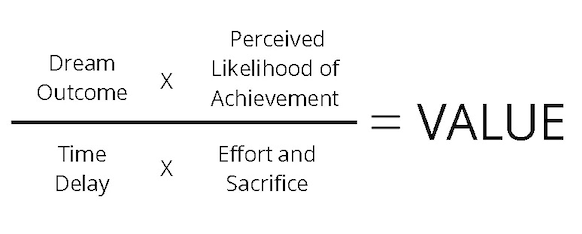
The real secret comes from Alex Hormozi’s value equation: increase perceived value while decreasing price and effort for your customers.
Instead of just adding more content, focus on creating systems that deliver faster, more certain results with less work from your students.
This means you need to build frameworks, templates, and processes that work as force multipliers for your students’ efforts.
Here’s what successful course creators build:
- Decision frameworks that guide decision-making step-by-step
- Ready-made templates that eliminate starting-from-scratch paralysis
- Process maps that turn complex workflows into repeatable steps
- Implementation checklists that ensure nothing gets missed
This creates a leverage effect where your upfront work in system creation pays dividends across thousands of students.
You invest time once to build the system, and it works for every student forever.
And when students see faster results with less effort, they become vocal advocates.
They share success stories, refer friends, and create case studies that attract new students without additional marketing effort from you.
Focus on customer success and retention

Here’s an uncomfortable truth that most course creators refuse to face: they’re terrible at helping students succeed.
They create decent content but provide zero accountability, support, or success tracking.
Your students buy with enthusiasm but never finish. This leads to refunds, bad reviews, and zero word-of-mouth marketing.
The creators scaling to millions flip this equation.
They become obsessive about student success rates, completion percentages, and transformation stories.
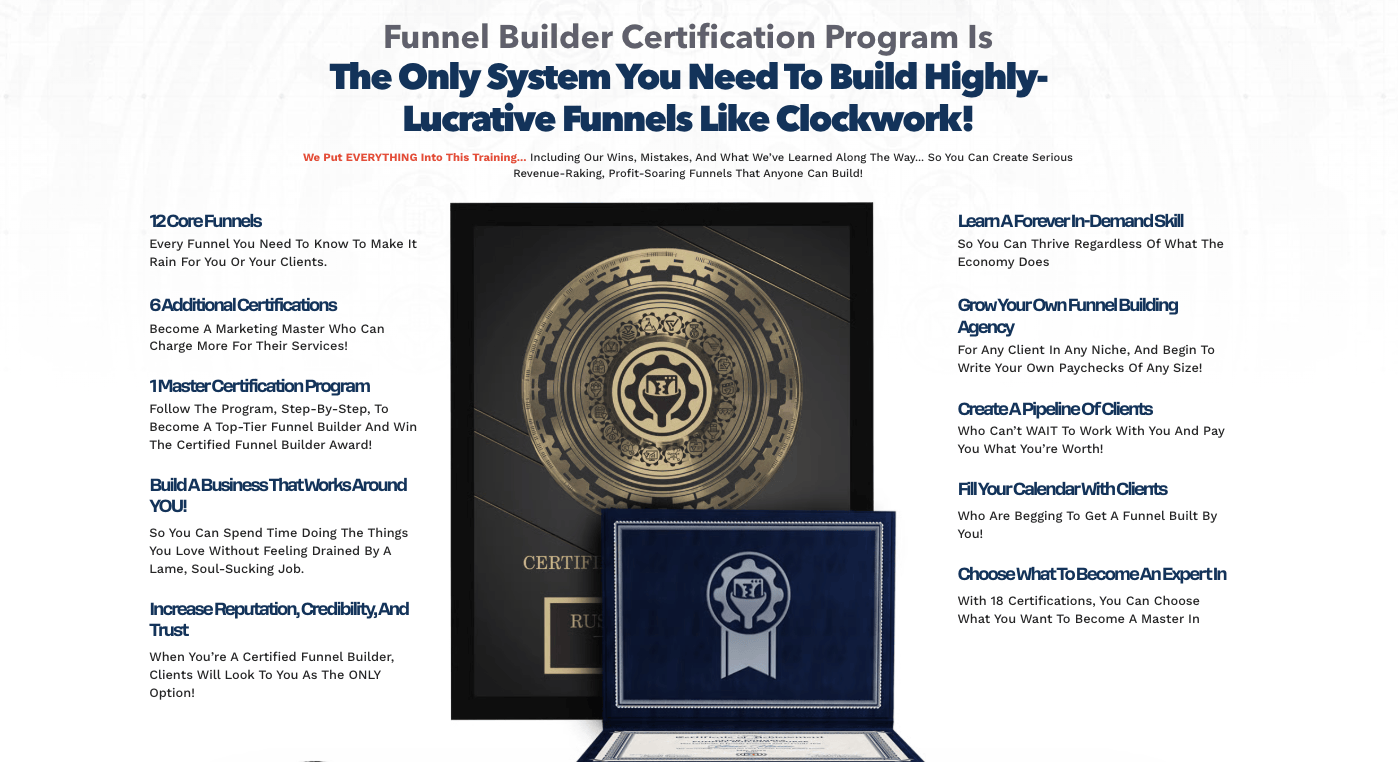
Russell Brunson has built an entire empire around this concept with ClickFunnels’ certification programs.
He goes way beyond teaching funnel building. He builds a complete system to help students succeed.
Students get:
- Implementation challenges
- Peer accountability groups
- Live coaching calls
- Public recognition when they hit milestones.
This motivates them to share their wins publicly.
This creates social proof that attracts new students. New students see these success stories and expect similar results, boosting their commitment and completion rates.
These successful students become case studies, affiliates, and referral sources that drive massive organic growth.
The system compounds because success creates more success, building a self-reinforcing cycle that scales exponentially.
Revenue optimization
Build irresistible offers with bonuses and guarantees

Most creators treat their course as the entire offer. That’s amateur thinking.
The real magic happens in the bonus stack and guarantee structure.
Make bonuses that speed up transformation, remove obstacles, or provide implementation tools. Each bonus should solve a specific step in your customer’s journey.
👉 Create a customer journey map. Find every potential stopping point or confusion moment. Then build bonuses that address these friction points.
This creates a frictionless system where students naturally flow from one step to the next.
Marie Forleo has perfected this art with B-School.
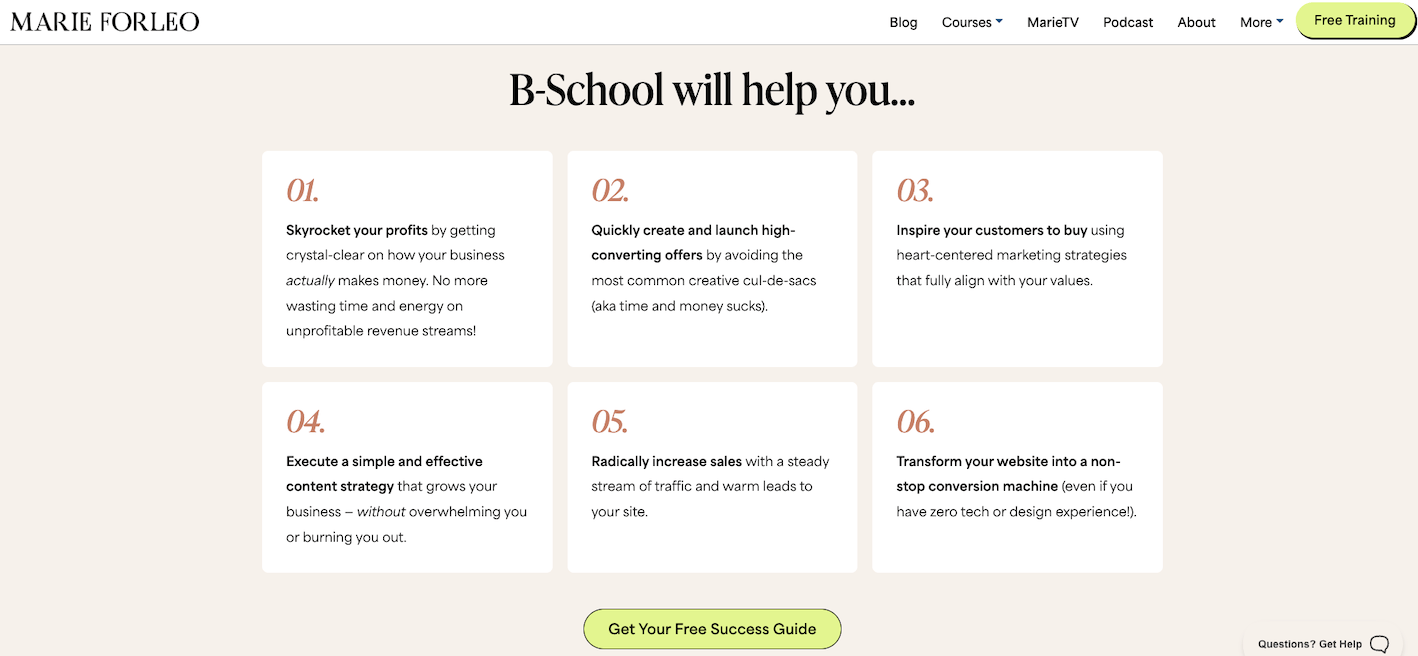
The core course costs $2,000, but the bonus package is worth over $10,000.
Her students get access to:
- Entire vault of previous training materials
- One-on-one business coaching sessions with certified coaches
- Legal templates for business setup
- Exclusive mastermind groups
The genius is in the systematic objection handling.
Each bonus directly addresses common student concerns before they become problems.
And, combined with her 60-day money-back guarantee, the risk feels completely eliminated while the value feels overwhelming.
👉 The stronger the offer, the easier the sale, the more successful students become, the stronger the testimonials, the easier future sales become.
Create systematic launch sequences
Winging your launches is a recipe for disaster.
Create a simple, repeatable launch sequence that delivers predictable results time after time.
The real magic happens when you perfect this system over multiple launches.
Amy Porterfield has turned this into an absolute science with her Digital Course Academy launches.
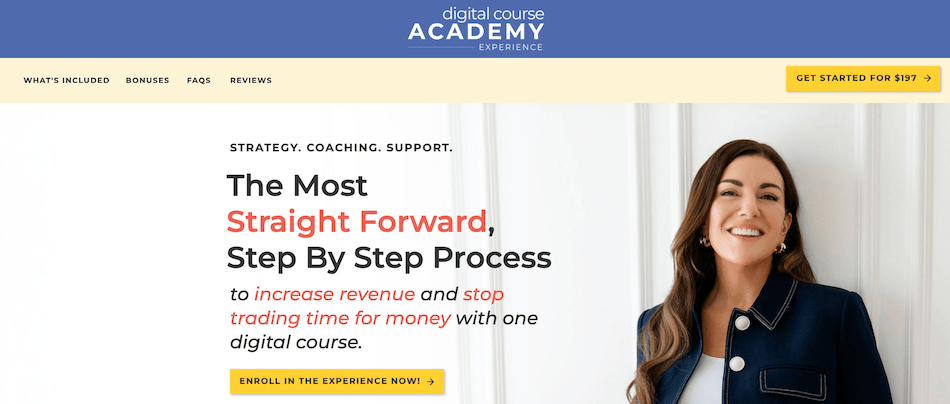
She doesn’t just run webinars – she builds a complete nurturing system that guides people step by step.
Her signature launch sequence includes:
- Free roadmap: Maps student’s current position and end goal
- 3-part video series: Delivers quick wins and builds credibility
- Live webinar with Q&A: Demonstrates her method and addresses concerns
- Strategic email sequence: Handles objections and creates urgency
Each piece naturally flows into her course offer, creating a smooth journey. Students feel helped and ready to buy, not pushed into a sale.
The result? She consistently hits million-dollar launches multiple times every year.
Optimize based on data, not feelings

Most course creators just go with what feels right or what worked for someone else.
But million-dollar course creators track real numbers and build feedback loops using their own audience data.
What separates the pros: they don’t care about vanity metrics like subscriber counts.
Instead, they obsess over metrics that actually drive revenue (KPIs):
- Email open rates by segment: Tracking who’s actually engaging with your messages
- Webinar attendance percentages: Not just signups, but who shows up
- Sales page conversion rates: The moment of truth when interest turns into sales
- Customer lifetime value: Understanding what students are worth beyond the first purchase
The systems approach is super practical here.
You automate data collection so you can make better decisions without the guesswork.
👉 Set up simple tracking systems that measure what actually matters in your business, then schedule regular check-ins to turn all that data into action steps. This creates a powerful compounding effect that builds over time.
Scaling & growth
Build tiered product funnels
Single-course businesses hit revenue ceilings fast.
Smart creators build product ecosystems with natural progression pathways and compounding customer lifetime value.
👉 Your $97 course should naturally lead to your $997 program, which should logically connect to your $5,000 mastermind.
As customers invest more, they should get more personalized attention, deeper community access, and more sophisticated tools.
Brendon Burchard built this perfectly with his High Performance ecosystem.
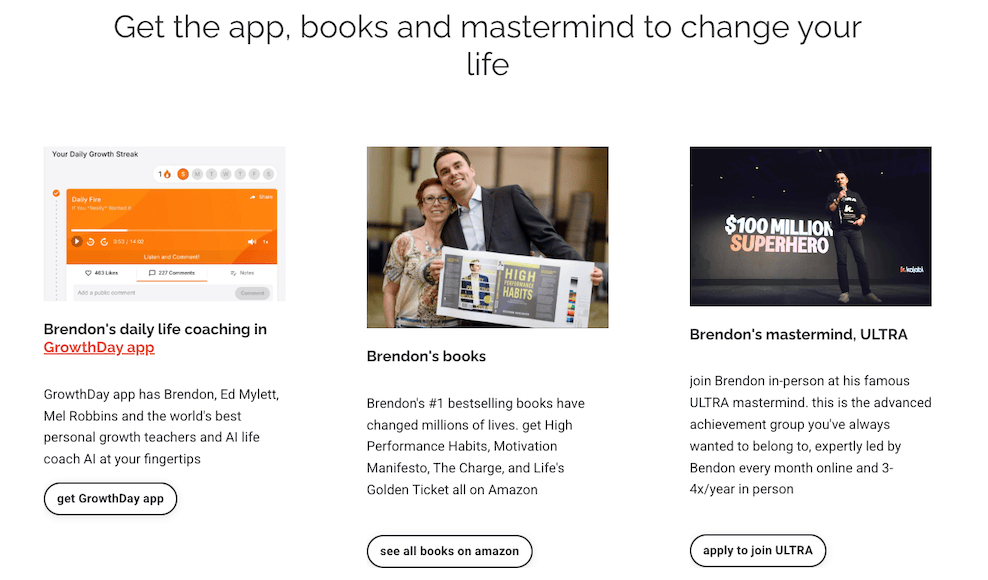
His $47 book leads to his $197 online course, which funnels into his $2,997 certification program, which connects to his $25,000 mastermind – a perfect example of sales funnels for coaches.
Each level delivers transformation appropriate to that investment level, but also reveals challenges that only the next level can solve.
Here is how it works:
- Level 1 – book readers: Book readers learn principles but need implementation guidance (course).
- Level 2- course students: Course students learn techniques but need certification for credibility (certification program).
- Level 3 – certified coaches: Certified coaches need ongoing support and advanced strategies (mastermind).
Students naturally want the next level because each tier reveals new challenges that only the next level can solve.
This creates a self-reinforcing system where success at one level creates demand for the next.
Transition to recurring revenue models
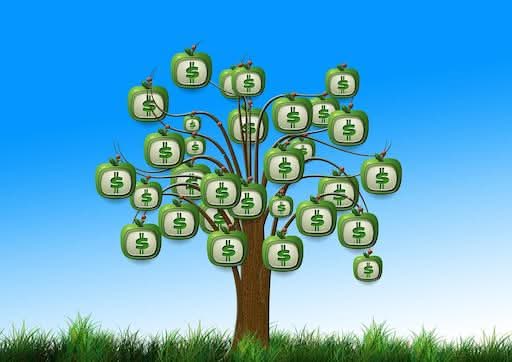
One-time course sales are exhausting.
You’re constantly hunting for new customers and re-launching to the same audience over and over.
The smartest course creators shift to evergreen course membership or subscription models that generate predictable monthly income while creating deeper relationships with students.
Your course becomes the foundation, but the real value is in ongoing support, monthly coaching calls, updated content, and peer community.
You’re selling continuous transformation, not just information.
Pat Flynn nailed this transition with his SPI All-Access Pass.
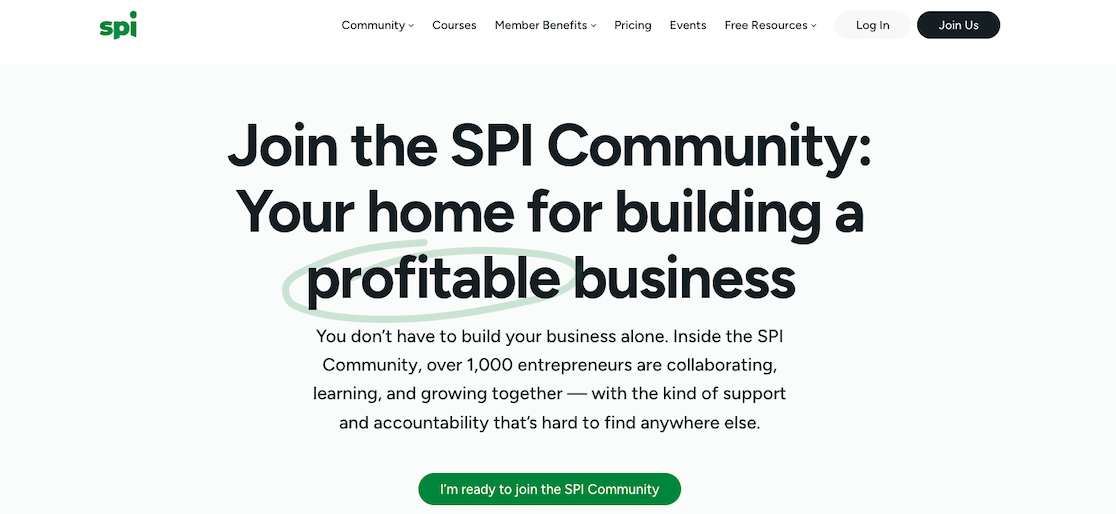
👉 Instead of selling individual courses for $500-$2000 each, he created a $97/month membership that gives access to everything plus monthly live coaching and an active community.
He analyzed his most engaged students to discover what they truly valued: ongoing access, community connection, and continuous learning.
Now.
With this, his revenue became predictable. His students got better results. And he finally escaped the exhausting launch cycle.
His customers’ lifetime value jumped from $500 to $5,000+, creating a powerful compound effect as members refer friends and become walking success stories.
Diversify content delivery methods
Most online courses are video-heavy and cater to one learning style. That automatically excludes a huge portion of potential students who learn differently.
The course creators scaling fastest create multi-modal learning systems that adapt to different learning preferences and lifestyle constraints.
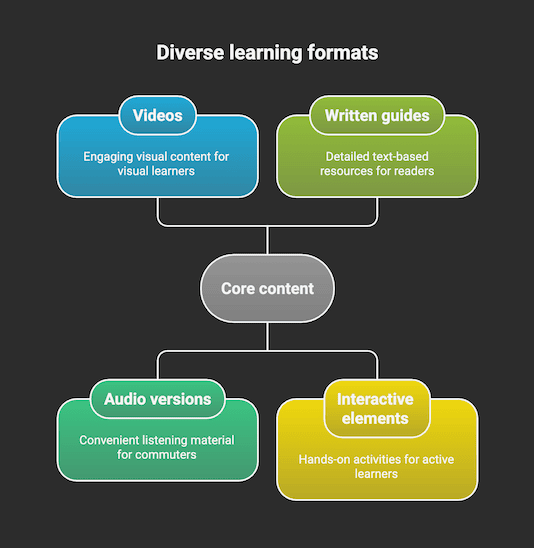
Provide the same core content in multiple formats as part of your online course structure – videos for visual learners, audio versions for commuters, written guides for readers, and interactive elements for hands-on learners.
The compound effect happens through completion rate optimization.
When students can learn in their preferred style and on their preferred schedule, they’re more likely to finish the course and get results.
And, higher completion rates lead to better testimonials, more referrals, and reduced refund requests.
Chalene Johnson perfected this with her Marketing Impact Academy.
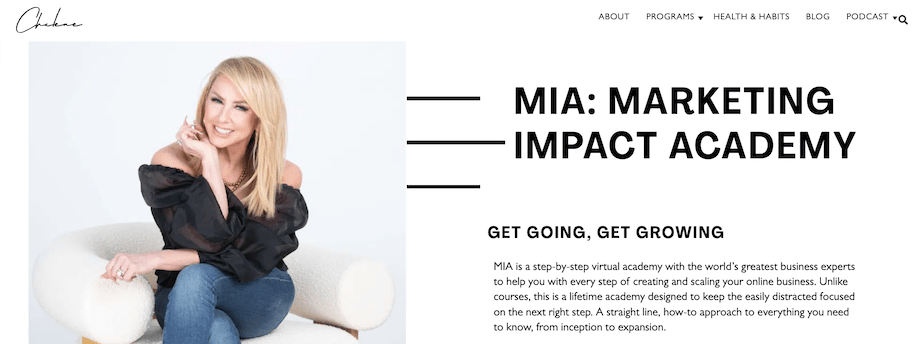
She delivers the same core content through:
- Live cohort calls: Real-time interaction with instructors and peers
- On-demand video modules: For visual learners to watch lessons at your own pace
- Downloadable audio versions: Perfect for busy people to learn during commutes
- Detailed action guides: Step-by-step instructions you can follow
- Bite-sized social media posts: Quick refreshers to keep key ideas fresh
This flexibility makes a huge difference in how many people actually finish the course and feel happy with what they learned. And when students are happy, they tell their friends and buy more courses.
👉 Build a system that works for your students, not the other way around. This creates an advantage that gets stronger over time.
Leverage strategic partnerships and affiliates

Building your audience from scratch is the slow lane to success.
The fast lane is creating collaborative growth systems with people who already have your ideal customers.
👉 Here’s the unconventional systems approach: the best partnerships aren’t just affiliate deals. They’re value-first collaborations that create mutual compound benefits.
Don’t just ask influencers to promote your stuff. Instead, team up to create content together, run workshops side by side, or develop online challenges that complement each other.
When you focus on giving value first, the promotional opportunities will naturally come your way.
Each valuable collaboration increases your credibility, expands your network, and creates referral opportunities that continue paying dividends for years.
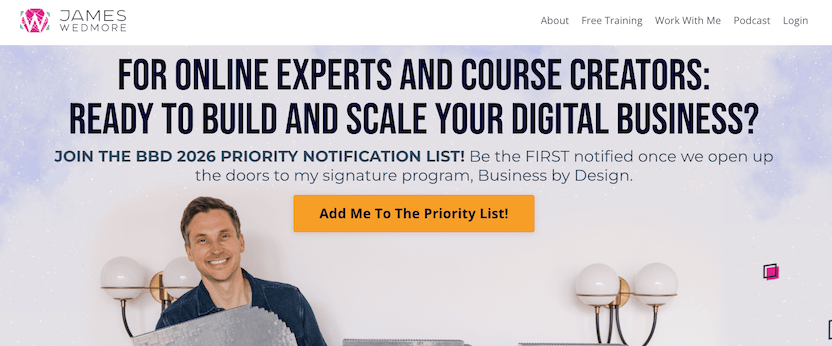
James Wedmore built his Business by Design course empire primarily through strategic partnerships.
Instead of cold pitching affiliates, he provided value first – guest teaching in others’ programs, co-hosting podcasts, and creating joint ventures.
His approach was intentional.
👉 He found complementary educators in related niches and built relationships by contributing value to their communities first.
He focused on being genuinely helpful without asking for anything in return.
His affiliate network generates more revenue than his own marketing because these relationships are built on genuine value exchange, not transactional promotion requests.
Building your personal brand for compound effects
The ultimate system that amplifies every other strategy is building a personal brand ecosystem that works for you 24/7.
This isn’t about posting random thoughts on social media. It’s about systematic thought leadership that positions you as the obvious choice in your niche.
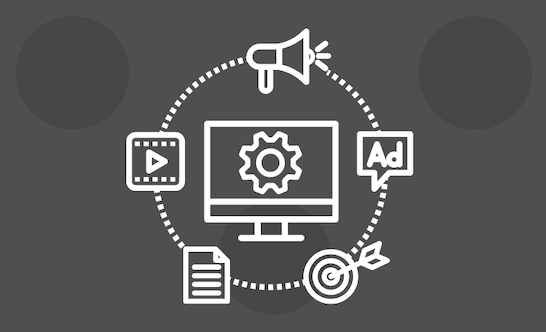
Build content systems that show off what you know while solving real problems for your audience.
- Start with long-form video content: Record in-depth tutorials or interviews that showcase your expertise visually
- Extract audio for podcasts: Turn those videos into podcast episodes to reach audiences who prefer audio learning
- Transcribe into blog posts: Convert video transcripts into searchable, evergreen written content that attracts students for years
- Create social media snippets: Cut short clips and quotes from your main content to develop ongoing relationships with your audience
These content types work together to create a powerful compound effect that builds your authority around the clock. 🔄
Your personal brand creates scalable trust.
Instead of proving you’re credible to each prospect one by one, your brand does the heavy lifting through strategic content repurposing.
👉 The ultimate leverage? your content and reputation sell your courses while you sleep, creating a self-reinforcing system that gets stronger with time.
Your implementation roadmap
These ten strategies aren’t just tactics – they’re interconnected systems that create compounding effects when implemented thoughtfully.
Here’s your action plan:
- Start with one system: Choose the strategy that resonates most with your current situation
- Build measurement into everything: Track what matters, not what’s easy to measure
- Create feedback loops: Let data guide your decisions, not gut feelings
- Design for compound effects: Think long-term multiplication, not short-term addition
Master the first system completely before adding the next one.
Each system should reinforce and amplify the others, creating exponential rather than linear growth.
Stop treating it like a hobby and start systematizing your online business like a system that works without your constant presence.
Choose systems over tactics.
Let time and consistency create the multiplication effect that transforms your business.







